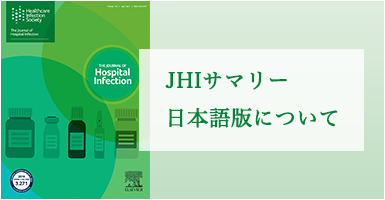人工股関節・人工膝関節関連感染症における B 群レンサ球菌
Group B streptococcus in prosthetic hip and knee joint-associated infections
P. Sendi*, B. Christensson, I. Uckay, A. Trampuz, Y. Achermann, K. Boggian, D. Svensson, M. Widerstrom, W. Zimmerlia on behalf of the GBS PJI study group
*Basel University Medical Clinic Liestal, Switzerland
Journal of Hospital Infection (2011) 79, 64-69
妊娠していない成人の侵襲性 B 群レンサ球菌感染症が増加している。人工関節周囲感染症における B 群レンサ球菌についての知見はほとんどない。本研究の目的は、B 群レンサ球菌による人工関節周囲感染症の臨床像と、その転帰にかかわる治療法について解析することである。10 施設から収集した 36 件の B 群レンサ球菌による人工関節周囲感染症のエピソードの特徴を評価した。34 件のエピソードについては 2 年以上にわたる追跡評価が実施され、治療および転帰の解析が可能であった。大半の感染症(75%)は移植手術から 3 か月以上後に発生していた。ほとんどの患者(91%)は 1 つ以上の併存疾患を有しており、69%が急性症状を呈し、83%は人工関節周囲の軟部組織に損傷が認められた。34 件のエピソード中 20 件ではデブリードマン+人工関節温存を試みたが、このうち 5 件は最終的に人工関節が抜去された。したがって、19 件(56%)のエピソードで人工関節が抜去され、このうち 14 件は即時に抜去が行われた。4 件の抜去は永久的なものであった。使用頻度が高い薬剤はペニシリン誘導体およびクリンダマイシンであった(68%)。94%のエピソードでは感染症が治癒し、82%は機能的可動性が維持された。デブリードマン+人工関節温存の成功が得られたのは、症状の持続期間が短く、人工関節が安定しており、組織損傷が少ない場合であった(10 件/10 件対 3 件/10 件、P = 0.003)。公表されているアルゴリズムに準拠した手術は、良好な転帰と関連していた(P = 0.049)。
同カテゴリの記事
Pontiac fever among retirement home nurses associated with airborne legionella
Nosocominal hepatitis C in a thoracic surgery unit; retrospective findings generating a prospective study
Caring for a patient with rabies: implications of the Milwaukee protocol for infection control and public health measures
Preventing invasive candida infections. Where could we do better?
Antimicrobial efficacy and inactivation kinetics of a novel LED-based UV-irradiation technology H. Schöbel*, G. Diem, J. Kiechl, D. Chistè, G. Bertacchi, A. Mayr, D. Wilflingseder, C. Lass-Flörl, W. Posch *MCI - The Entrepreneurial School, Austria Journal of Hospital Infection (2023) 135, 11-17
サイト内検索
アーカイブ
-
2024年
- ・ 1月(24)



